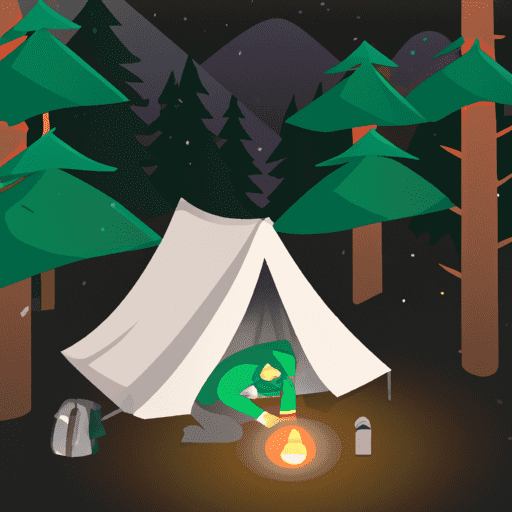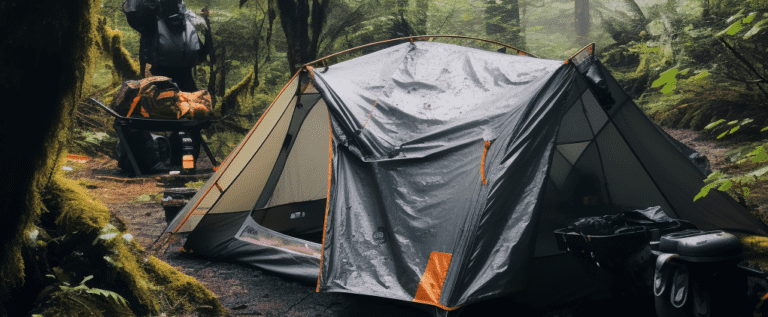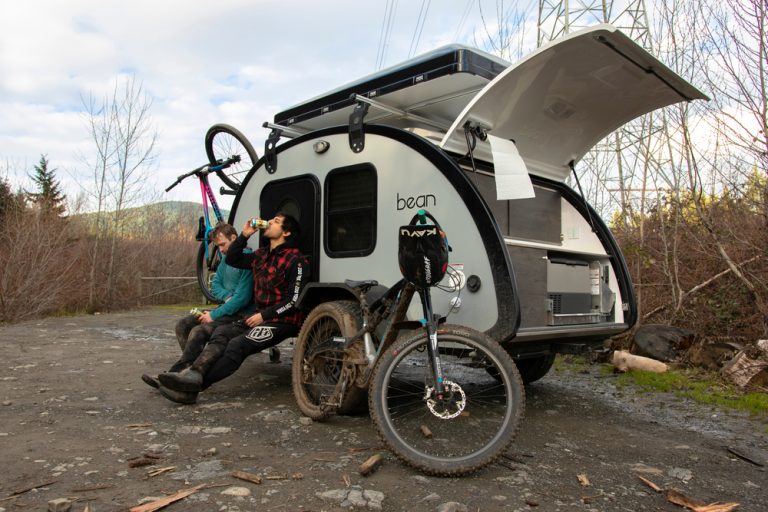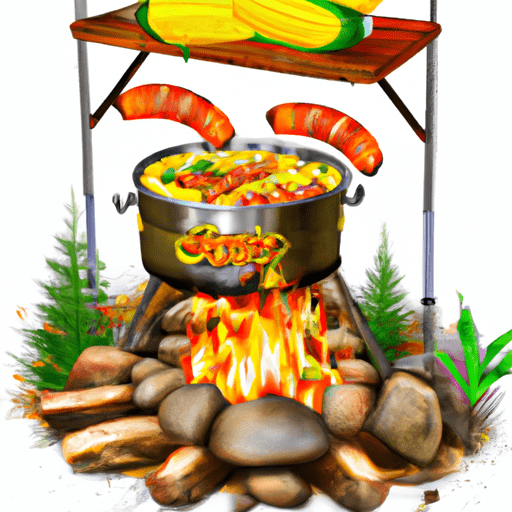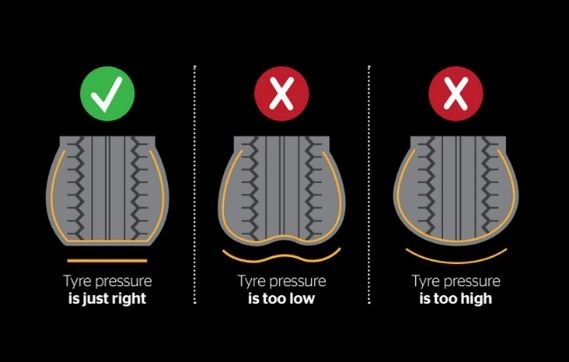Ever wondered how to keep your tent cozy and warm during those chilly nights under the stars?
The way to keep a tent warm includes ensuring it has appropriate insulation, reducing drafts, and ensuring doors and windows are securely zipped and closed.
Whether you're a seasoned camper or planning your first wilderness adventure, understanding how to maintain a comfortable temperature in your tent is essential.
It's not just about comfort, but also safety. Hypothermia can be a real risk if temperatures plummet and you're unprepared.
This practical guide will walk you through key strategies like:
- choosing the right tent
- selecting an ideal site
- insulating your tent effectively
- using portable heaters safely
- dressing appropriately for the weather conditions
- utilizing hot water bottles
- maintaining proper ventilation.
Keep these tips at hand and enjoy the freedom of camping out in any season without compromising on warmth and comfort.
Key Takeaways
- Choose a tent with durable and insulated materials to keep warm during camping.
- Properly insulate the tent using thermal blankets or reflective tarps, and cover mesh windows or doors to prevent drafts.
- Dress appropriately for the weather with thermal clothing and layering techniques, and use hot water bottles to keep the tent warm at night.
- Balance ventilation and heat conservation by managing condensation, using sleeping bag liners and thermal blankets, and allowing some air circulation for optimal tent warmth.
- A tent footprint can also help.
Choose the Right Tent
You're not gonna believe it, but choosing the right tent is your first step to a warm and cozy camping experience. Your choice in a tent can make or break your trip, especially when you're battling against cold temperatures.
Before you buy any old thing, remember – not all tents are created equal.
Start by looking at the tent material. You want something that's durable yet insulated for heat retention. Think along the lines of polyester or nylon; these materials are known for their ability to trap warmth inside while keeping the cold out.
But don't stop there! Keep an eye out for Seasonal Tents. These aren't just marketing gimmicks; they're designed with specific weather conditions in mind. A 4-season tent, for instance, is built to withstand harsh winter conditions and keeps warmth in more effectively than its 3-season counterpart.
Before making your final decision, weigh in on what matters most: durability versus portability? Insulation over ventilation? It may take some time to find that perfect balance but trust me – it's worth every bit of effort when you're tucked away snugly as a bug while nature does her worst outside!
Proper Tent Site Selection
Believe it or not, nearly 50% of heat loss occurs due to improper campsite selection, so it's crucial to choose your spot wisely. Start by considering the ground cover importance. A surface such as dry grass or leaf litter can provide natural insulation for your tent. Avoid setting up on bare soil or rock surfaces which could absorb the heat from within your tent.
Next, consider sunlight exposure benefits. Pick a site that gets morning sun to warm up your tent early in the day. However, avoid full-day sun exposure as this can overheat your tent and make it uncomfortable.
Still unsure? Here's a quick guide:
| Ground Cover | Sunlight Exposure |
|---|---|
| Dry grass/leaf litter – Natural insulation | Morning sun – Warms up tent early |
| Avoid bare soil/rock – Absorbs heat | Avoid full-day sun – Overheats tent |
Remember, you're not just choosing a place to sleep; you're creating an environment that encourages warmth and comfort throughout your camping adventure. So, look at all aspects of potential campsites before making a decision – terrain type, weather conditions and even wind direction matter more than you might think!
Insulate Your Tent
Don't underestimate the power of proper insulation – it's your next best move to ensure a cozy camping experience. It can make a world of difference in keeping your tent warm against the elements.
Start with Thermal Blankets. These aren't just for emergencies, they're an inexpensive and lightweight way to add extra warmth to your tent. Place them on top of your sleeping bag or use them as liners inside. They reflect back body heat effectively and keep you snug.
Next, consider using Reflective Tarps. Fold one under your tent before setting it up, this creates an additional barrier between you and the cold ground, reflecting heat back towards you instead of allowing it to dissipate into the earth below.
Sealing off spaces where cold air can enter is another crucial step in insulating your tent. Cover any mesh windows or doors with spare clothing or towels, ensuring no unwanted drafts sneak inside.
Proper insulation doesn't have to be complicated or expensive but its impact on enhancing your comfort during camping expeditions can't be overstated. Embrace the freedom that comes with well-prepared camping trips by armoring yourself with these simple yet effective ways to insulate your tent.
Use Portable Heaters
As the saying goes, ‘an ounce of prevention is worth a pound of cure,' and bringing along a portable heater can truly be your best friend when it comes to fending off the chilly camping nights. However, like any good relationship, you must treat your trusty heat source with respect and caution.
This means being savvy about heater safety measures. Remember that not all heaters are created equal. Ensure that your portable companion has vital safety features such as an automatic shut-off mechanism if it tips over or overheats. Additionally, keep combustibles far away from the unit to prevent accidental fires.
Fuel efficiency is another key aspect to consider. The last thing you want is running out of fuel in the middle of a frosty night because your heater guzzles more than expected. Look for heaters that balance power with economy, ensuring you stay warm without draining resources.
When setting up camp, position your heater in a stable spot where it won't tip easily. And remember – never leave it unattended! Incorporating these measures ensures warmth and peace throughout those cold camping nights – making memories while staying cozy and safe under canvas skies.
Dress for the Weather
You'll find that dressing appropriately for the weather can make a world of difference to your camping experience. Being exposed to cold temperatures while camping outside is inevitable; however, you have control over how much it affects you.
Your first line of defense against the chill should be thermal clothing. This type of attire is specially designed to trap body heat and keep you warm in freezing conditions.
Layering techniques are another crucial element in keeping warm while camping. Begin with a base layer that wicks away moisture. The mid-layer should provide insulation and retain warmth, with materials like fleece or down being ideal choices. The outer layer needs to protect against wind and rain, ideally being both waterproof and breathable.
An often overlooked factor is your footwear. Make sure your feet stay dry by wearing waterproof boots lined with insulating material. Don't forget about gloves, hats, and scarves as well—they can help prevent heat loss from your head and hands.
Remember that staying warm isn't just about comfort; it's also vital for preventing hypothermia or frostbite during long hours outdoors in winter conditions. So dress smartly—it's one essential way to ensure a safer, warmer camping experience no matter what Mother Nature throws at you.
Use a Hot Water Bottle
Snuggling up with a hot water bottle at night can be a real game changer when you're braving the great outdoors in cold weather. It's a simple yet effective way to keep your tent warm and ensure you get a good night's sleep after an adventurous day.
Let's first talk about bottle material safety. When selecting a hot water bottle, consider one made from rubber or silicone, which are both excellent at retaining heat for extended periods. Ensure it's thick enough to withstand boiling water without melting or leaking. Also, choose one with a cover to prevent direct contact with your skin, avoiding burns.
Next is water temperature regulation. Fill your bottle with hot but not boiling water to avoid damaging the material or risking injury. Once filled, place it near your sleeping area but not directly under your blanket or sleeping bag, as this may cause overheating during the night.
Remember that while using a hot water bottle is an excellent method of warming your tent, it doesn't replace other necessary precautions such as insulating your tent properly and wearing appropriate clothing layers for the weather conditions. With these measures combined, you'll surely conquer any cold night out in nature!
Tent Ventilation
Understanding tent ventilation is crucial for a comfortable camping experience. It's not just about staying cool during hot weather, but also about preventing condensation which can dampen your gear and make the environment feel colder.
Striking a balance between ventilation and heat conservation may seem challenging, but with a few practical tips and knowledge, you can easily manage it to maintain an optimal temperature in your tent.
Preventing Condensation
Much like battling the mythical Hydra, preventing condensation in your tent is a multi-headed problem that needs to be tackled strategically. Condensation Solutions involve more than just proper ventilation; it's about comprehensive moisture management.
- Mind the Microclimate: Your breath produces moisture which, when combined with cold external temperatures, leads to condensation. Consider using a sleeping bag liner to trap body moisture and prevent it from reaching the tent walls.
- Choose Your Spot Wisely: Wet grass can increase humidity levels inside your tent. Opt for dry, elevated spots whenever possible.
- Use Absorbent Materials: An overlooked trick is placing absorbent materials like camp towels around your tent interior.
Don't let condensation compromise your freedom in exploring the outdoors! With these strategies, you can keep your tent warm and dry throughout your adventure.
Balancing Ventilation and Heat Conservation
Now that we've explored how to prevent condensation in your tent, let's shift our focus to striking a balance between ventilation and heat conservation. Mastering this can be tricky, but it's essential for maintaining warmth without dampness.
Thermal blankets play a pivotal role here. They reflect back your body heat, keeping you warmer inside the tent while also serving as an extra layer between you and the cold ground. But remember not to seal off every vent completely – allow some air circulation to avoid moisture buildup.
Your sleeping bag is another crucial factor. Choose one with an appropriate temperature rating for your camping conditions, ensuring it offers both comfort and insulation against chillier nights. Remember, the key is balancing warmth retention with airflow for optimal tent warmth.
Frequently Asked Questions
What kind of sleeping bag is best for keeping warm in a tent?
For optimal warmth in a tent, choose a sleeping bag with high-quality insulation material. The best type is a mummy bag. It's tight-fitting and traps heat effectively, ensuring you're snug throughout your outdoor adventure.
How effective is body heat in warming up a tent?
Body heat efficiency can indeed help warm your tent, but it's not enough on its own. Combining it with insulation materials like thermal blankets can significantly boost the warmth. So, don't rely solely on body heat.
Can I use a stove or cooking equipment to heat up my tent?
Like a bear hibernating, you crave warmth in your tent. Yes, you can use a stove but beware of safety issues. Portable heaters usage is safer and effective. Insulation techniques also help maintain the heat inside.
Is there a specific tent shape that retains heat better?
Dome-shaped tents excel in heat retention due to their structure. Incorporating tent insulation techniques and using heat retention materials like thermal blankets can further maximize warmth, giving you the freedom to camp comfortably.
Are there any safety issues I should consider when trying to keep my tent warm?
Absolutely, safety is paramount. Beware of Carbon Monoxide risks when using heaters in enclosed spaces. Fire safety precautions are vital, never leave heating unattended. Freedom's sweet, but don't compromise on safety for warmth.
Conclusion
So, you've braved the wild and faced down the chill. With the right tent and strategic location, insulation tactics, portable heaters, and warm clothing layers, your camping experience is now cozy. Even a hot water bottle has become your trusty sidekick. And don't forget – those vents aren't just there for decoration!
Now kick back and savor that warmth enveloping you like a comforting blanket amidst nature's icy breath. You've conquered the cold!



